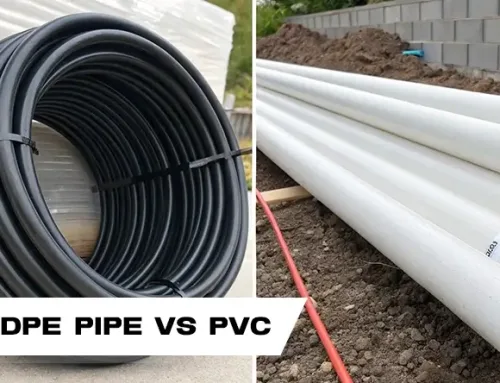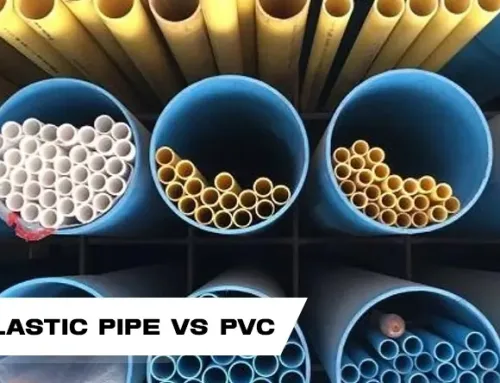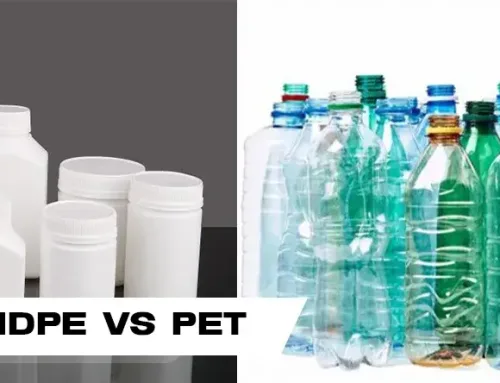Polyethylene is perhaps the most common polymer today because it is versatile and relatively cheap. But when it comes to safety, one question often arises: This article will contribute to answering such questions as; Is polyethylene flammable or combustible? It is therefore important that industries, especially those in the packaging, construction, and manufacturing sectors, and consumers who use polyethylene products daily, understand its flammability.
This guide explores polyethylene’s burning characteristics and fire retardancy, its performance in the presence of heat and flame, and measures to be taken.
What is Polyethylene?
Polyethylene (PE) is the major type of polymer that has long ethylene polymer chains which are also known as monomers.
This one is relatively light in weight, very strong, and is capable of withstanding harsh chemical treatments a factor that qualifies it for use.
Examples of applications include; carrier bags and bottles, conduits, and insulation materials respectively.
But Is polyethylene flammable? Let’s find out.

Polyethylene and Fire: Flammability Overview
Polyethylene is flammable but not easily inflammable. Here’s what you need to know:
-
Flammability
Polyethylene will burn in certain circumstances but has to be subjected to high temperatures to actually burn. It is not as highly inflammable as most polymers linked with other compounds.
2. Combustion Properties
Pyrolysis of polyethylene results in the evolution of heat, carbon dioxide, and water vapor, and further liberation of toxic gases such as carbon monoxide may also take place.
3. Comparison to Other Polymers
Polyethylene is even moderately flammable but has a higher ignition temperature than polypropylene and polystyrene materials such as polystyrene food trays or polypropylene food containers.
Polyethylene Combustion Process
How does polyethylene burn? or what temperature does polyethylene catch fire?
However, polyethylene spontaneously combusts at temperatures ranging from 330 to 410 degrees Celsius or 626 to 770 degrees Fahrenheit depending on the density of the material or the residence of the ethylene.
Behavior Under Open Flames
But when comes in direct contact with flames or high heat, polyethylene is characterized initially by the formation of specimens of a viscous liquid. But if it gets hotter, then it will quickly catch fire. Another characteristic of polyethylene is dripping during combustion, thus increasing fire spread.
Chemical structure and combustibility of the material ionic composition and affections as a function of chemical makeup
Polyethylene contains a chemical bond of long chains of hydrocarbons; therefore, it’s flammable by nature.
On the other hand, it possesses a high molecular weight and is much more thermally stable than other polymers; therefore, it has a relatively high ignition point and a slower rate of burn.
Safety Issues For Polyethylene Polyethylene requires that direct exposure to open flames or heat is prohibited.
To comply with ISO 4589, it is recommended to use fire retardants if necessary for certain uses.
Do not store polyethylene near sources of heat and light, and keep it in properly ventilated areas.
Do not expose it to other oxidizing substances since they ignite flammable substances.
If fire endurance is important in the application, then it is recommended to use modified polyethylene treated with fire retardants or other materials.r, its high molecular weight and stability compared to other polymers result in a relatively higher ignition temperature and slower combustion rate.
Safety Considerations When Using Polyethylene
To ensure safe use of polyethylene, consider the following:
1. Fire Safety Practices:
- Avoid exposing polyethylene to open flames or high temperatures.
- Use fire-retardant treatments if required for specific applications.
2. Handling and Storage Tips:
- Store polyethylene away from heat sources and in well-ventilated areas.
- Keep it away from oxidizing agents, as these can increase flammability risks.
3. Applications Requiring Fire Resistance:
In scenarios where fire resistance is critical, consider using modified polyethylene treated with fire retardants or choosing alternative materials.
Applications and Flammability Concerns
Polyethylene’s flammability is a key consideration in various applications:
Construction
Polyethylene is also applied in construction for insulation, vapor barriers, and piping. Being a highly flammable material means that timber is prone to fires, but it can be protected with treatments that make it more fire-resistant than other products that meet building code requirements.
Packaging
The polyethylene that is used in packaging such as plastic bags to shrink wraps increases the flammability of stock and goods during storage and transport.
Storage practices also present certain risks that can however be prevented in some ways.
Industrial Materials
In industrial applications, polyethylene is used in equipment and mechanical components hence need to establish fire precautionary measures, particularly in high standard temperatures.
Response to Frequently Asked Questions (FAQs)
Polyethylene Is It Safe to Use Near Heat?
Polyethylene is flammable and should not be used around any open flames or with exposure to high amounts of heat without fire resistance adaptations.
Is Polyethylene Melt Before It Burns?
Indeed, polyethylene has the characteristic of melting before it even ignites. This sort of melting behavior can lead to ‘dripping’ and this not only can help spread a fire.
Is it Possible to Make Polyethylene Fire Resistant?
However, it is important to note that polyethylene can be also made fire resistant by using fire retardants or by adding some agents to the material.
Conclusion
Thus the question: Is polyethylene in any way flammable or combustible? Polyethylene is a flammable material but it is not as easy to burn as other polymers because it can only burn at very high temperatures. Density, chemical structure, and environmental conditions determine the flammability of the substance.
For safety, it is for industries and customers to punctiliously use proper methods of handling and storage and to provide fire retarding treatment. Appreciation of these measures not only promotes safety but as well enumerator the versatility of polyethylene in numerous applications.








Leave A Comment